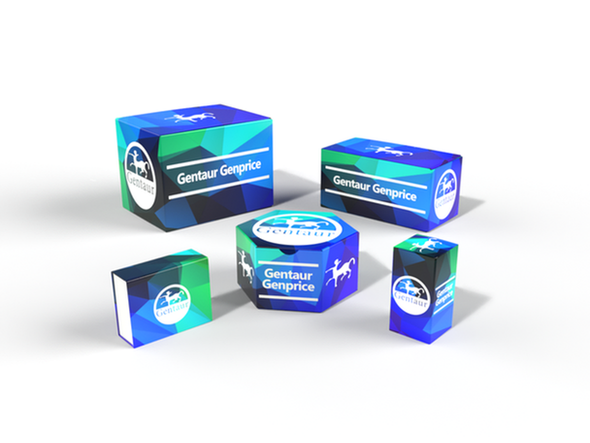Description
YWHAG Antibody | 61-615 | Gentaur UK, US & Europe Distribution
Host: Rabbit
Reactivity: Human, Mouse
Homology: Predicted species reactivity based on immunogen sequence: Bovine, Chicken, Rat, Zebrafish, Xenopus
Immunogen: This YWHAG antibody is generated from rabbits immunized with a KLH conjugated synthetic peptide between 63-92 amino acids from the N-terminal region of human YWHAG.
Research Area: Cancer, Neuroscience, Signal Transduction
Tested Application: WB, IHC-P, Flow
Application: For WB starting dilution is: 1:1000
For IHC-P starting dilution is: 1:10~50
For FACS starting dilution is: 1:10~50
Specificiy: N/A
Positive Control 1: N/A
Positive Control 2: N/A
Positive Control 3: N/A
Positive Control 4: N/A
Positive Control 5: N/A
Positive Control 6: N/A
Molecular Weight: 28 kDa
Validation: N/A
Isoform: N/A
Purification: This antibody is purified through a protein A column, followed by peptide affinity purification.
Clonality: Polyclonal
Clone: N/A
Isotype: Rabbit Ig
Conjugate: Unconjugated
Physical State: Liquid
Buffer: Supplied in PBS with 0.09% (W/V) sodium azide.
Concentration: batch dependent
Storage Condition: Store at 4˚C for three months and -20˚C, stable for up to one year. As with all antibodies care should be taken to avoid repeated freeze thaw cycles. Antibodies should not be exposed to prolonged high temperatures.
Alternate Name: 14-3-3 protein gamma, Protein kinase C inhibitor protein 1, KCIP-1, 14-3-3 protein gamma, N-terminally processed, YWHAG
User Note: Optimal dilutions for each application to be determined by the researcher.
BACKGROUND: YWHAG belongs to the 14-3-3 family of proteins which mediate signal transduction by binding to phosphoserine-containing proteins. This highly conserved protein family is found in both plants and mammals, and this protein is 100% identical to the rat ortholog. It is induced by growth factors in human vascular smooth muscle cells, and is also highly expressed in skeletal and heart muscles, suggesting an important role for this protein in muscle tissue. It has been shown to interact with RAF1 and protein kinase C, proteins involved in various signal transduction pathways.



![YWHAG Antibody (Center) [APR05094G] YWHAG Antibody (Center) [APR05094G]](https://cdn11.bigcommerce.com/s-1rdwiq712m/images/stencil/590x590/products/57751/58055/gentaur-genprice__26005.1661610467__29809.1661628092__75433.1661676199__77988.1661684280__64362.1661692443__24095.1661854356.png?c=1)


